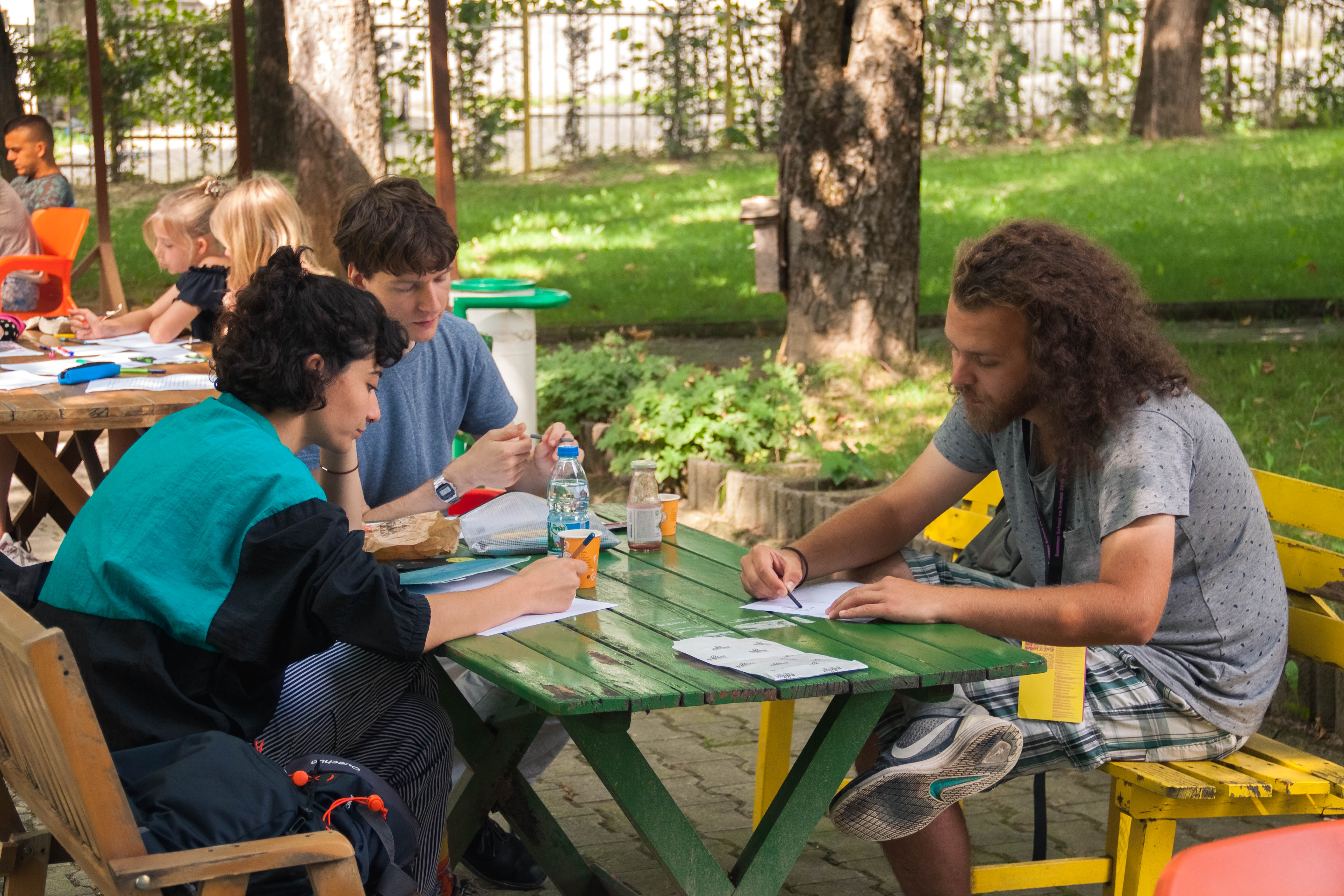Course 6: This is a Painting Class
Course by Felix Gmelin and Thomas Elovsson
July 23 – August 1, 2018
Course description:
This is a painting class that takes you out of your regular practice. It is based on individual research, short lectures, quick practical experiments and mutual discussions about what painting could be and mean for us in our society today. It is a class about how to make it a relevant tool and language for communicating your personal affections and desires.
This is a painting class that examines how storytelling and identity politics can move painting into new directions. Social and political issues have invaded painting today. Artists such as Anna Boghiguian, Lubaina Himid, Tala Madani and Kerry James Marshall do fascinating works by telling stories forgotten or hidden and neglected by the major discourse. At the Art Academy in Vienna professor Ashley Hans Scheirl today offers classes in “Contextual Painting” promoting "trans" topics and practices such as Queerness, Trans-Media, Trans-Genre, and Transgender. Feminism started these ideas about giving value to “small stories” or “minor stories” outside of the mainstream. The feminist idea “the private is political” is changing both the discipline of painting and even Hollywood today, no?
Stories are powerful: they create nations, institutions, religions, dissidents, fear and rebellion, but also build and brake families. Media society makes information move fast, but only very few of us really develop stories or a language of our own. We would like to help you to develop your stories and painterly means, and discuss how one story always overlies another. We are curious to learn about how you deal with your stories and methods.
This is a painting class about painting and storytelling – about how to articulate your dreams, narratives, memories, and subjective experiences. It aims to develop your stories and articulations, taking into consideration how they relate to the medium and language you choose. We as instructors share our expertise on painting and storytelling, and will discuss how form follows function within your work.
Biographies
Felix Gmelin lives and works in Oslo. He studied at the Royal Institute of Art/ Kungl Konsthögskolan in Stockholm (1983-1988) and currently serves as Professor of Contemporary Art at the Oslo National Academy of the Arts and teaches at the International Academy of Art in Palestine. In 2010 Gmelin was awarded the Carnegie Art Award ”for a work that is an almost archaeological exploration of the social and political ramifications of the tactility and expressiveness of painting. A key topic in early performance art, Gmelin returns to this field of action in a complex work that reconsiders the painterly “touch” by passing through the media of film, painting and printed stills.”
Gmelin’s solo shows include PORTIKUS, Frankfurt a.M; Malmö Konstmuseum; Gasworks, London; Galerie Nordenhake, Stockholm; Milliken Gallery, Stockholm; Annet Gelink Gallery, Amsterdam; Vilma Gold, London; and maccarone inc., New York. He has also had solo presentations at Premier | Art | Basel and the Frieze Art Fair. Group shows include the 50th Venice Biennale curated by Francesco Bonami and Daniel Birnbaum; the 52nd Venice Biennale curated by Robert Storr; the berlin biennial 4 curated by Maurizio Cattelan, Massimiliano Gioni and Ali Subotnick; and the October Salon 2006 in Belgrade curated by Barbara Heinrich and René Block.
Thomas Elovsson, born 1962. He is an artist based in Stockholm. Recent exhibitions include; ”A Proposal for Daily Life” Björkholmen Gallery 2015, ”Tensta Museum” Tensta Konsthall 2013, ”I want to hold your hand”, Borås Art Museum, 2013, Bjorkholmen Gallery, 2012, ”The Red Krayola with Art and Language”, H-I-T, Gothenburg, 2010. A book about his works ”Found Text and Borrowed Ideas” was published in 2012. He is also a member of The Great Learning Orchestra, a collective of musicians and non-musicians that performs regularly. Most recently at Bonniers Konsthall, Fylkingen and Index Contemporary Art Center.
Thomas Elovsson has worked as Senior Lecturer at Konstfack and as a Professor at The Royal Academy of Art.
Thomas Elovssons paintings deals with the conditions for art making and being an artist. They relate to the work that is done in the studio and how that is presented in shows and in documentation. In relating to existing artworks and quotes by artist his work becomes as a continuation of these. They are referred to as a way of looking at how art history is used to make new statements. Many of the texts he is using are not from the immediate canon but are found in the periphery making way for an alternative history and bringing forth artworks outside of the main stream.
Much of the art one experiences is done through publications, magazines, homepages, stories told, rumours and so on. This creates a situation where information is put in motion, new information is added together with misinterpretations and bad memory.
Elovssons works are reminders of all of this. They work as footnotes and as suggestions.
